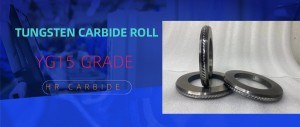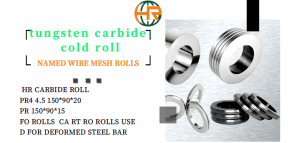Understanding Surface Damage on Hot Rollers
Hot rolls play a vital role in the metal processing industry as they are responsible for shaping metal into various products. However, continued exposure to high temperatures and heavy loads can cause surface damage to the rollers, affecting their performance and lifespan. In this blog, we’ll take a closer look at common surface damage to hot rolls and explore the factors that contribute to their occurrence.
1. Wear:
One of the main surface damages suffered by carbide hot rolls is wear. Continuous contact with the metal blank or plate, combined with high temperatures and pressures, can cause progressive corrosion of the roll surface. This wear can manifest as material loss, surface roughness, and ultimately a loss of roll dimensional accuracy.
2. Thermal cracking:
The extreme temperature fluctuations experienced by hot rolls can cause surface thermal cracks. Because rolls undergo rapid heating and cooling cycles during metal processing, differential expansion and contraction of the roll material can lead to the formation of cracks. These cracks not only compromise the structural integrity of the rolls but also create surface irregularities that affect the quality of the metal products being processed.
3. Oxidation and corrosion:
During the metal rolling process, hot rolls are often exposed to an oxidizing atmosphere, which may lead to surface oxidation and corrosion. The formation of oxides on the roller surface reduces its smoothness and increases friction, leading to problems such as surface scratches and reduced product finish. In addition, Tungsten Carbide Rolls corrosive elements present in the metalworking environment can accelerate the degradation of the roll surface, further exacerbating damage.
4. Surface fatigue:
The repetitive nature of the metal rolling process subjects hot rolling mill rolls to surface fatigue, leading to the formation of microcracks and surface pitting. This type of damage is often attributed to cyclic loading and unloading of the roll, causing localized stress concentrations that weaken the surface over time. If left unaddressed, surface fatigue can severely impact roll performance and service life.
5. Impact damage:
In high-speed metal rolling environments, impact damage to hot PR rollers rolls is not uncommon. This can occur due to an accidental collision of a metal blank or other object with the surface of the roll, causing dents, gouges, or even breaks. Impact damage can compromise the roll’s ability to maintain even contact with the metal, resulting in surface irregularities and potential product defects.
Understanding the factors that lead to surface damage on hot rolls is critical to implementing effective maintenance and mitigation strategies. By proactively addressing these issues, manufacturers can extend roll life and ensure consistent product quality. In addition, advances in roll materials, coatings and surface treatments are continually being explored to enhance the resistance of hot rolls to surface damage.
In summary, the surface damage experienced by hot rolls is a result of the harsh operating conditions they experience in the metal processing industry. From wear to hot cracking, oxidation, surface fatigue and impact damage, these issues can significantly affect the performance and service life of a roll. By prioritizing regular inspections, Wire mesh roll maintenance and investing in innovative roll technology, manufacturers can mitigate the effects of surface damage and optimize the efficiency of metal rolling operations.
https://www.ihrcarbide.com/
E-mail: hengrui@hrcarbide.cn
Post time: Apr-17-2024












